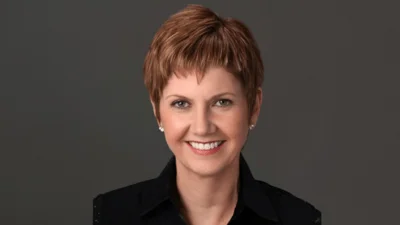Mary and Leigh Block Museum of Art issued the following announcement on Aug. 6.
Scattered with nonsensical, crisp, geometric forms, Manfred Mohr’s plotter drawing, P-049 Formal Language, IRI = 2, 1970, 1979, looks like a cryptograph waiting to be deciphered.
The title of the artwork sounds alien and abstract, referencing the name of an algorithm Mohr wrote that was then processed by the computer and plotted. According to Mohr, the program’s rules are as follows:[1]
- The elements are horizontal, vertical, 45 degree lines, square waves, zig-zags, and have probabilities for line widths and lengths.
- In each position on a very dense imaginary matrix, a sign is composed from 0-7 elements from the above alphabet.
- When 0 lines are chosen, a circle can be drawn having a randomly chosen radius and center.
While computer generated art today has become more accepted in dominant art historical discourse, in its debut, critical and thoughtful consideration was often overlooked because of its military origins, “cold” aesthetics, and its perceived stake in displacing the artist.
Emerging from the military laboratories during World War II, computer art was rooted in a context that strayed too far from the refined traditions of artistic practice than the art world would have liked. The technologized process also fed into fears of the computer replacing the artist. After all, according to German philosopher Max Bense, if computers could be programmed to make beautiful art, and could execute aesthetic decisions more precisely than the human hand, what is left of the human artist? This is not an unfamiliar fear, one that still persists today in the discourse surrounding automation. Instead of upholding a narrative of the artist’s sophisticated, expressive practice and the tactile intimacy between the artist and the artwork, the computer was a wedge that separated the two—obliterating any evidence of the artist’s hand in the authorship of the work.
This newfound genre of art-making sparked a territorial anxiety from artists and critics alike, whose fears were masked behind criticisms as a way to justify protecting a history that had been cultivated and refined for centuries. By arguing how scientists and mathematicians lacked the knowledge of traditional artistic practice, critics compounded the view that these works were evidence of aesthetic ineptitude. Both process and product were categorized as cold, dull, lifeless and sterile.[2]
But when looking at Mohr’s print, it is impossible to ignore its relationship and its stake in art history. The discrete forms and serial repetitions conjure references to the arithmetic, procedural works of conceptual art, like Sol Lewitt’s “Incomplete Open Cubes” in which Lewitt identified all 122 unique variations to produce an incomplete cube. The unpredictability of Mohr’s sequences reads like 1960’s avant-garde music scores which drew heavily from systems of notation and indeterminacy. Similar to the unexpected outcomes of chance performances in which a viewer can notice something new at every coordinate on the page, Mohr said that in his work, “only the starting point and a hypothetical destination are known. What happens during the journey is often unexpected and surprising.”[3]
Looking at the print, the only clue of Mohr’s hand in the work is found in his signature at the bottom right corner. Though inconspicuous, this lone organic form professes Mohr’s authorship of the artwork. Mohr is the artist, the driving force, while the computer is merely an assistant that guides him to his final destination.
Original source can be found here.






 Alerts Sign-up
Alerts Sign-up